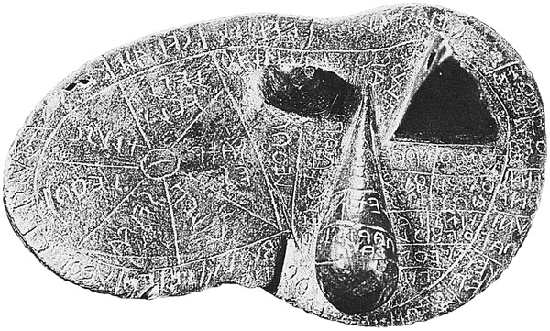April 2009 (113.2)
Article
A New Reconstruction of the Etruscan Heaven
The Etruscan 16-part cosmological system can be reconstructed on the basis of the bronze Liver of Piacenza (ca. 100 B.C.E.) and Martianus Capella’s The Marriage of Philology and Mercury, an intriguing fifth-century C.E. text. Reconstructing the 16-part heaven also has important implications for the orientation of Etruscan religious buildings, some of which seem to have been oriented toward the heavenly residence of the divinity/divinities worshiped there. Until now, two reconstructions of the Etruscan heaven have been proposed by Etruscologists; though seemingly incompatible, they are, in fact, both partially correct. This article builds on those reconstructions and proposes a solution that leads to the conclusion that the Etruscan heaven was subject to a seasonal movement of two regions per season, a clockwise and counterclockwise rotating movement influenced by the positions of sunrise and sunset on the solstices and equinoxes.
More articles like this:
Iconography • Literary Studies • Religion/Cult • Etruscan • Italy > Emilia-Romagna